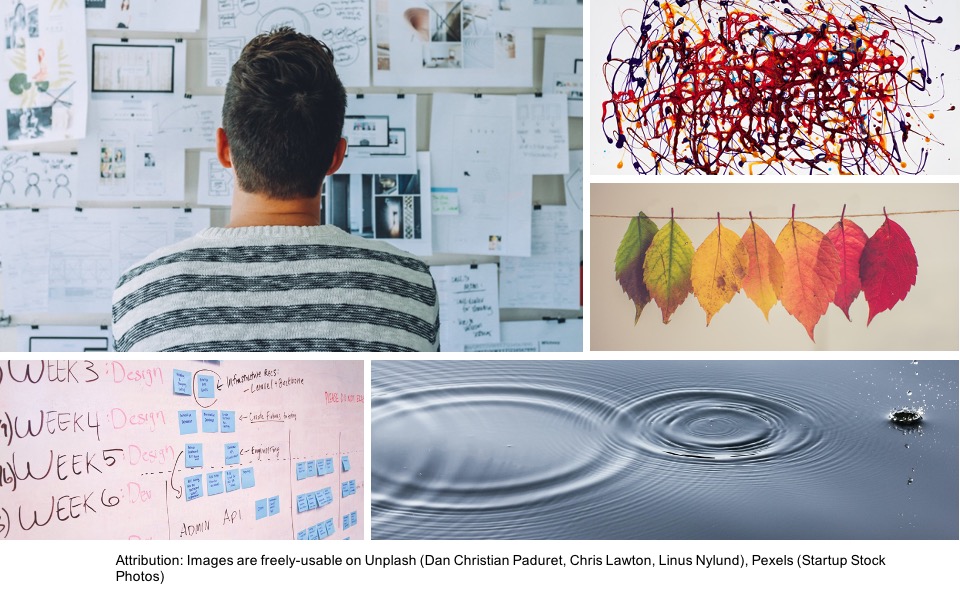The Grand VULCANIAN Challenge: Planning the Uncertainty and Sustaining the Change

Article 2 of Chapter 1: Complexity Management

“We are what we do to change what we are”
Eduardo Galeano
Welcome to the second article of the “Complexity Management” series. In the preface to this series, we proposed the adaptation of the scientific method to solving the challenges that the modern world poses for us in terms of managing innovative teams and organisations. In the first chapter we started the WAKER path with the “Observation (Watch)” and we analysed the characteristics of the fluid and hyperconnected Society born after the 3.0 Industrial Revolution thanks to advances in information and communication technologies. We find ourselves in a new environment described as VULCAN (Volatile, Uncertain, Layered, Complex, Ambiguous and Networked) and a paradigm shift to a modernity where their identities, whether they are individuals, human groups or business organisations, face the enormous challenge of adaptability to a changing and highly unpredictable new scenario. Are there guidelines for not leaving the success of such a process of change to the random whim of luck or chance? How to control the anxiety caused by unpredictability and uncertainty? In this chapter we will raise the main questions to be sorted out. There are no right answers to wrong questions. Any answer to a correctly formulated question is a challenge and therefore an “Opportunity” to not only survive, but even come out stronger.
As we discussed in the previous article, nowadays we are facing the following paradox: if there is something undeniable, it is that the certainty of uncertainty; and with it, the change. It is one of the few things that we can consider sure in life. However, the human mind is by nature averse to uncertainty and change. They are uneasy and cause us restlessness and anxiety. We have a hard time dealing with them and we do our best to avoid them. Yet, resisting uncertainty will not make it fade away and will not give us anything alternative to our advantage. The world will continue to be unpredictable, no matter how hard we try to pretend otherwise. And despite our best efforts, things will not always go according to plan.
In Nature, as it is by essence, we can usually observe many cases of these sudden transitions, of these revolutions both physiologically and behaviourally, individually and collectively: metamorphosis, migratory flows of birds, weather changes, puberty, etc. Can we learn something from the rules that govern it and the type of intelligence that manages these behaviours?
“Someone’s intelligence can be measured by the quantity of uncertainties that he/she can bear”
Immanuel Kant
Why do we struggle uncertainty and unpredictability? Perhaps the simplest answer is that we link it to danger. Consequently, it causes us anxiety and triggers reactive physiological and psychological mechanisms aimed at restoring the sense of control, even if it is more an illusion than real. What are some of these mechanisms and their consequences?
- Concealment. We accept it with resignation, or we reject it. We don’t want to know anything about it, we bury our heads in the sand, like an ostrich. We prefer to live in ignorance and inaction. Could we live continually thinking about the uncertainty of when we will die? Better not think about it. This measure is perhaps the simplest, although it does not always work and never offers an advantageous alternative.
- Shielding. If we do not know what may happen or when, in the event that its effect is negative, we protect ourselves. Thus, we try to increase control over current actions so that nothing deviates from what we know and offers us comfort. In business, we establish rules, protocols, procedures, compliance audits, risk insurance, etc. Ultimately, in order to reduce unpredictability and mitigate risk and its negative consequences, we spend resources. Yet, concomitantly we complicate the organisation by making it less agile, more bureaucratic, more cautious and refractory to individual innovation, empowerment and creativity.
- Illusion. When we don’t know what to do in the face of unpredictability and inactivity generates anxiety, we prefer to take action to keep ourselves entertained and experience the fictitious sensation of doing as much as we can. We can even fall into the frenzy that puts each of the individuals in an organisation at maximum occupancy. It is the aberrant application of the Red Queen effect, taken from the following passage from “Alice Through the Looking Glass” by Lewis Carroll, in which the Queen says to Alice: “Darling, in our country it takes all the running you can do, to keep in the same place. If you want to get somewhere else, you must run at least twice as fast as that!“. We prefer to live never having time for anything other than routine occupations, that become urgent, regardless they are more or less important. This effect can create physical and mental exhaustion in the individuals of an organisation, as well as loss of confidence and commitment due to the risk of falling into incoherent and inconsistent objectives. Rather than running harder, wouldn’t it be nicer running smarter?
However, all these mechanisms suffer from not proposing an active management of uncertainty and its primary consequence: the absence of reliable planning that enables successful future decision-making. We are used to making decisions about our future actions after a detailed and thorough analysis of the past and present situation. From there, we infer a model and extrapolate the behaviour to the future with the aspiration of planning what we should do in that supposedly certain scenario. However, in our modernity the necessary premises to maintain such a strategy are not given, to the point of wondering whether not planning is actually better than designing plans that we know will certainly not be fulfilled. This is where the first challenge arises: planning in an environment of high uncertainty and little prediction that allows us to make informed decisions in the future.
“Reforming is Living. Each of us is successively not one, but many”
Jose Enrique Rodo
The human being has a unique capacity as a species: to be able to change at will. It is not just that we are aware that survival means adapting to the inevitable change in the environment, but that we seek continuous improvement and progress. Paraphrasing Jose Enrique Rodo in his book “Motivos de Proteo”, we ordinarily change due to rythmic and slow evolution, almost unconsciously. But we also experience conscious, voluntary, and purpose-driven changes. It is about the continuous renewal versus the sluggish and deadly complacency. Even if it means just an inward looking to know what is inside us that we should get rid of because it means a burden.
However, we face a paradox: we pursue change, but we also fear it. Our nature cannot put up with being in constant change. In the words by David Dorenbaum, “life moves subtly between stability and mutation.” There are natural and unconscious internal mechanisms of resistance to change that are triggered even when there is a conscious and voluntary desire to change. As Dorenbaum points out, perhaps one of the most basic and simplest is to induce in us what Freud defined in his theory of psychoanalysis as the unconscious compulsion to repetition acquired in childhood. When we need to restore the control and ease felt in our comfort zone, we unconsciously repeat previously acquired habits. Such a defense mechanism, which is beneficial in principle, can work in our detriment by catching us. The repetition compulsion is the brake blocking our ability to change.
In Physics we know that for a transformation to be observable, it is not only required to be kinetically feasible on the time scale that we handle, but it must also be energetically favourable. As we said in the preface, nothing will happen to a system if there is no an excess of free energy to dissipate, in addition to what the transformation itself may require. That extra energy is the engine of change. There is no perpetual motion machine and any transformation implies an increase in overall disorder, so-called entropy (if something is ordered, it is because something is disordered even more). To foster sustainable change in business, organisations and individuals, we need to generate enough free energy available.
The second and third challenges can therefore be stated as follows: overcoming the trend to repetition compulsion and generating sufficient free energy as engines of sustainable change.

Planning for unpredictability and sustaining change is a fight against time. In our physical world, time is an absolute magnitude and relentlessly goes by. However, our subjective perception makes time an apparent and elastic magnitude. Marcel Proust wrote that “the time which we have at our disposal every day is elastic; the passions that we feel expand it, those that we inspire contract it; and habit fills up what remains”. Let´s live uncertainty and change with passion, because this will make us feel that we have more time to fill with the habits and customs that are pleasant to us. Perhaps that is a simple way of achieving the balance between stability and mutation, the very essence of life.
In summary, (1) be able to plan for unpredictability and informed decision-making for the future, and (2) make change a sustainable value.
In the the next article, step 3 of the WAKER path, we will talk about what we know at a scientific level about the mechanisms that govern emerging complex systems, characterised by their apparently unpredictable and ordinarily changing behaviour:
The Science (KNOW): “Understanding the Simplicity of Complexity: the Chaos Theory”
I wish we find some clues to answer the questions and challenges posed.
UPCOMING ARTICLES OF CHAPTER 1: COMPLEXITY MANAGEMENT
“Understanding the Simplicity of Complexity: the Chaos Theory”
